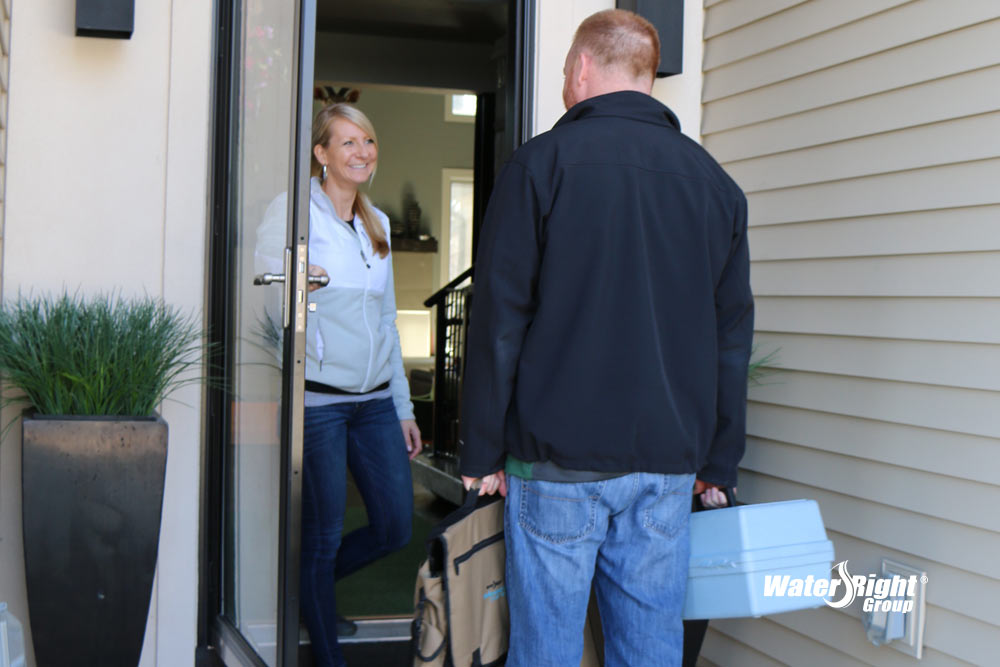
Free In-Home Water Quality Consultations – What Can You Expect?
Wondering what’s going on with your water? Many water treatment dealerships in the Water-Right family offer homeowners free consultations to help diagnose water problems and provide potential solutions.
Our experts come to your home to check out the situation, get a closer look at your water quality, answer any questions you have, and offer ways to fix problem water.
Here’s what you can expect when we pay you a visit …
In-Home Water Testing – A Real Example
We tagged along with Randy from Water-Right’s Clean Water Center in Appleton, Wisconsin, as he visited an area home for a free in-home consultation.
The homeowner told us:
- She already had a water softener, but didn’t like the taste of her tap water.
- She was considering a reverse osmosis system and wanted to learn more.
- She sometimes noticed a foul smell coming from sinks in certain areas.
1. The Initial Conversation
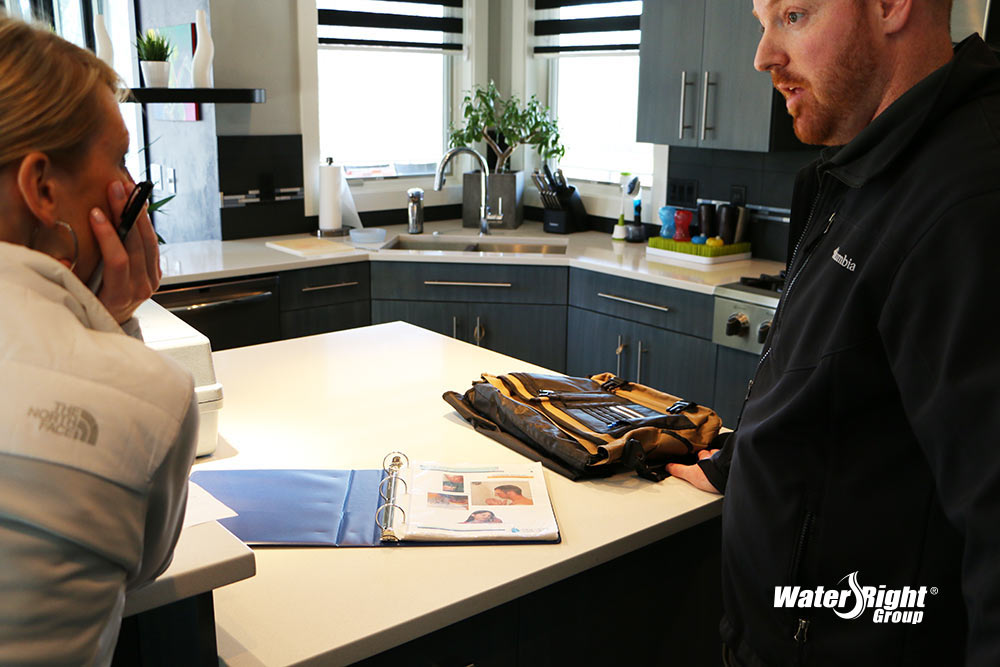
After one of our in-home water treatment professionals arrive to your home, we will typically begin by asking some preliminary questions about your water and any issues you’re experiencing.
We often use a binder (pictured above) or flash cards as we talk with you. They display common issues with residential water and explain the causes. Our experts will refer to them as we conduct different tests on the water in your home.
2. The Testing Kit
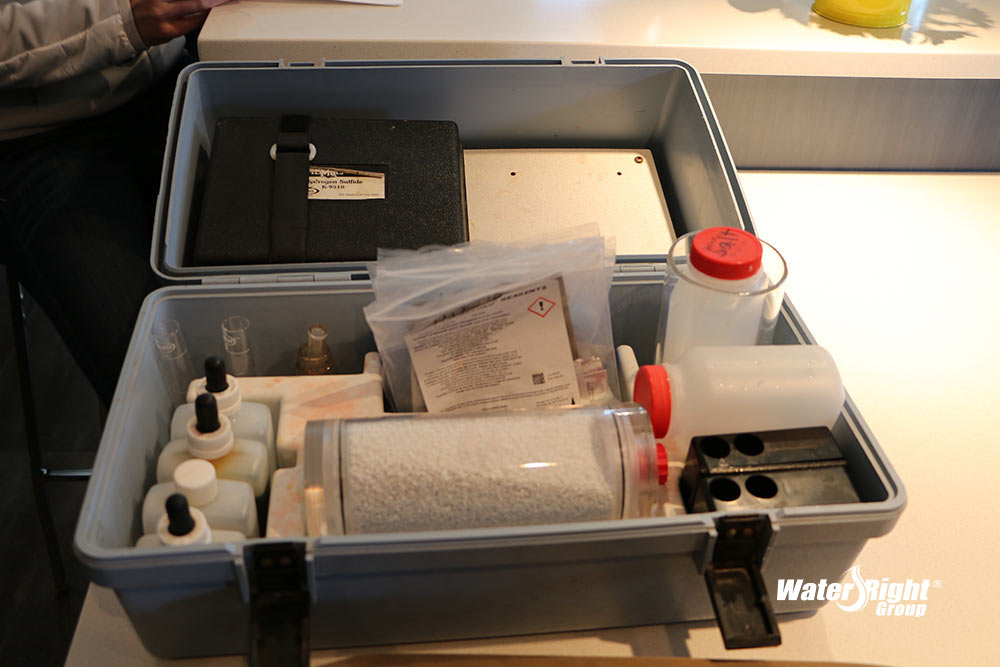
Our water treatment professionals carry in-home testing kits that include tools, chemicals, and receptacles to collect samples and find out what’s going on with your water.
Many of the things that cause problems with residential water we can’t see with our eyes. The chemicals cause reactions with contaminants to help us unlock the mystery.
3. Checking Out Your Existing Water Treatment
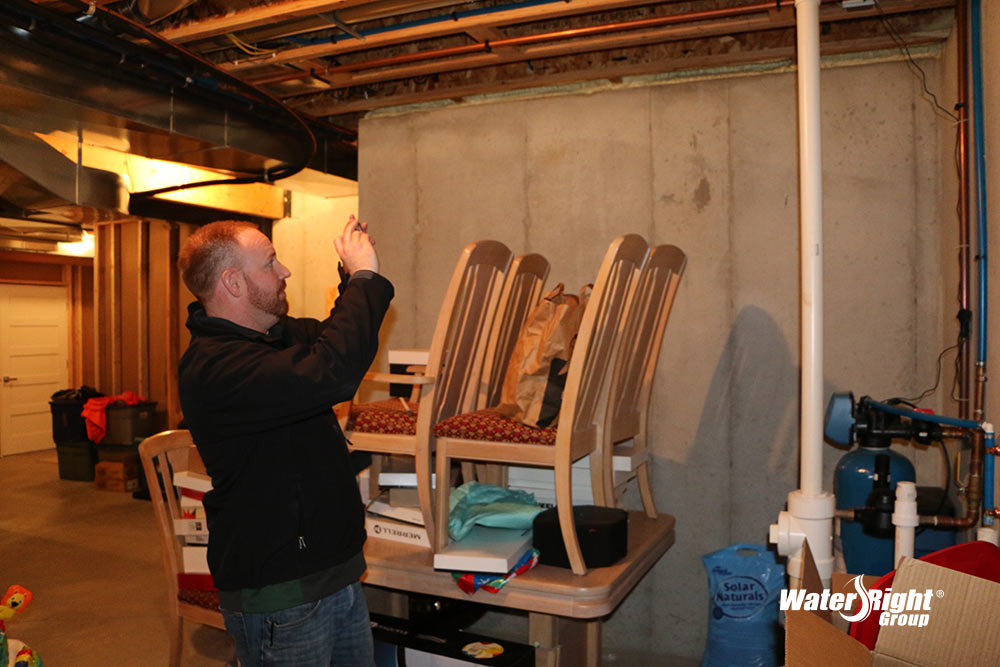
Following the initial conversation, we like to head to the basement to assess the situation. If there is no basement, we may check out your garage or locations where we can take a look at your plumbing and see the external water supply line.
Looking around your basement or garage gives us an idea where a water treatment and filtration system would best fit, if needed.
In this case, the homeowner already had a water softener installed in her home. Randy takes pictures to help him remember your homes setup and refer back to it later in case additional equipment will need to be installed.
4. Taking a “Raw Water” Sample
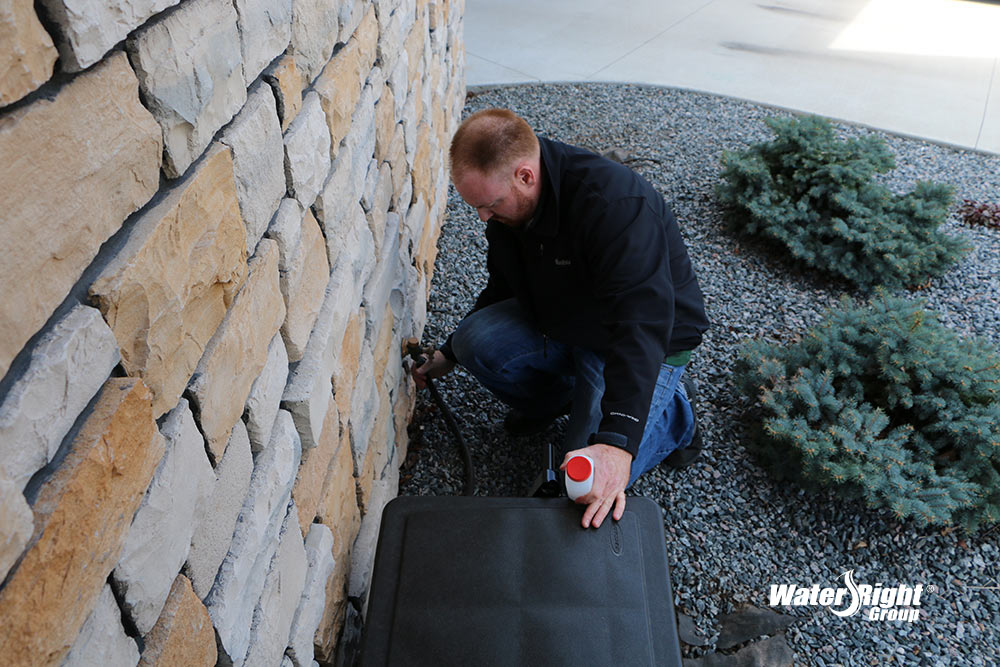
Since the water in this home is being softened, we also need to get a sample of “raw water,” which is the untreated water that comes into your home. An outdoor faucet is frequently used if there’s no access to untreated water inside the home.
This home has municipal water, which means it is being treated before it reaches the house to some extent. However, that doesn’t necessarily mean it’s high quality water. Municipalities will not remove hardness and also add chemicals like chlorine and fluoride.
Keep in mind, 85% of homes in the U.S. have hard water, including people living in cities of all sizes.
5. The Smell Test
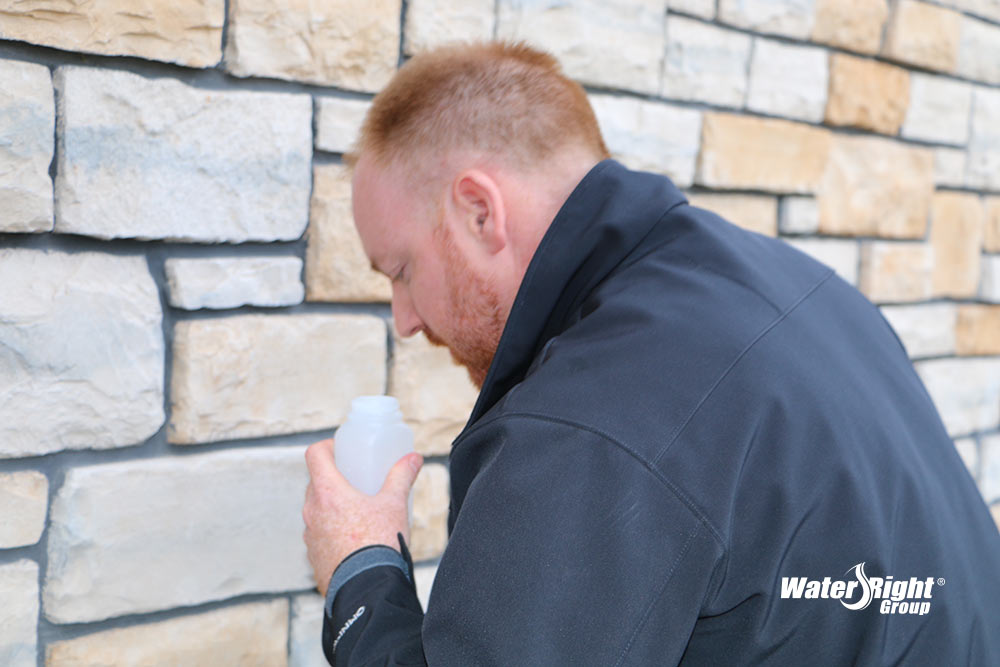
Our water treatment experts use their senses a lot – including smell. Water has different smells for different reasons. In this case, the only thing Randy could smell was chlorine from the water being treated by the municipality.
We’ll use this sample later and test it along with the treated water actually coming from the tap at the kitchen sink.
6. Diagnosing Water Problems
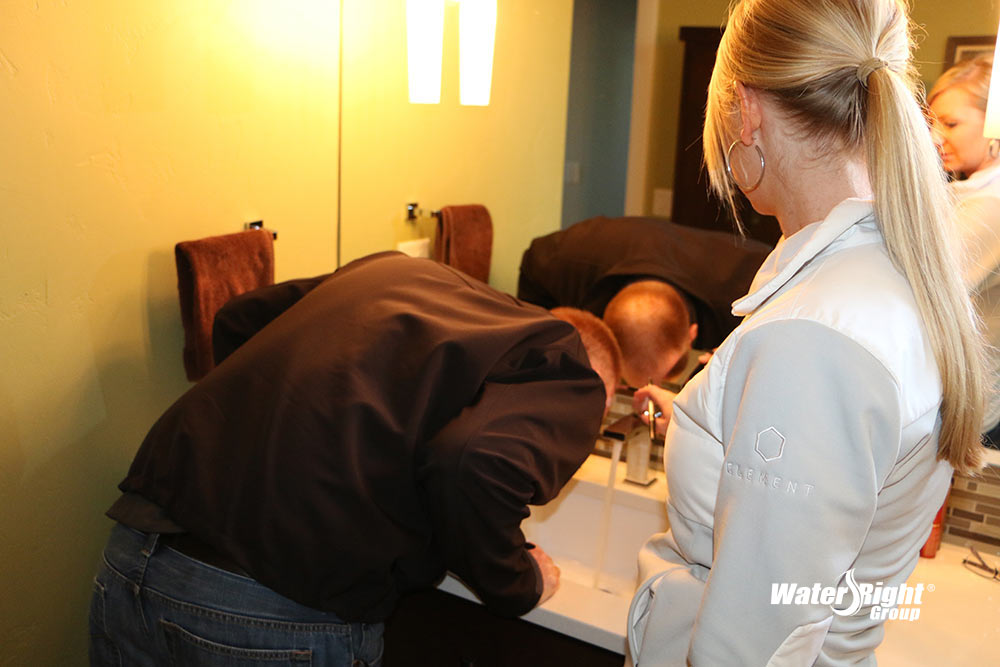
This homeowner complained about an unpleasant odor she noticed in a laundry room and a bathroom. She believed the smell was coming from the sinks in those areas, but it wasn’t always present or noticeable.
Randy once again used the smell test, as sometimes sulfur can be easily detectable. However, the smell wasn’t present during our visit. Since Randy didn’t smell anything in the actual water, his hunch was that it could be a problem with the drain.
7. Sink Testing
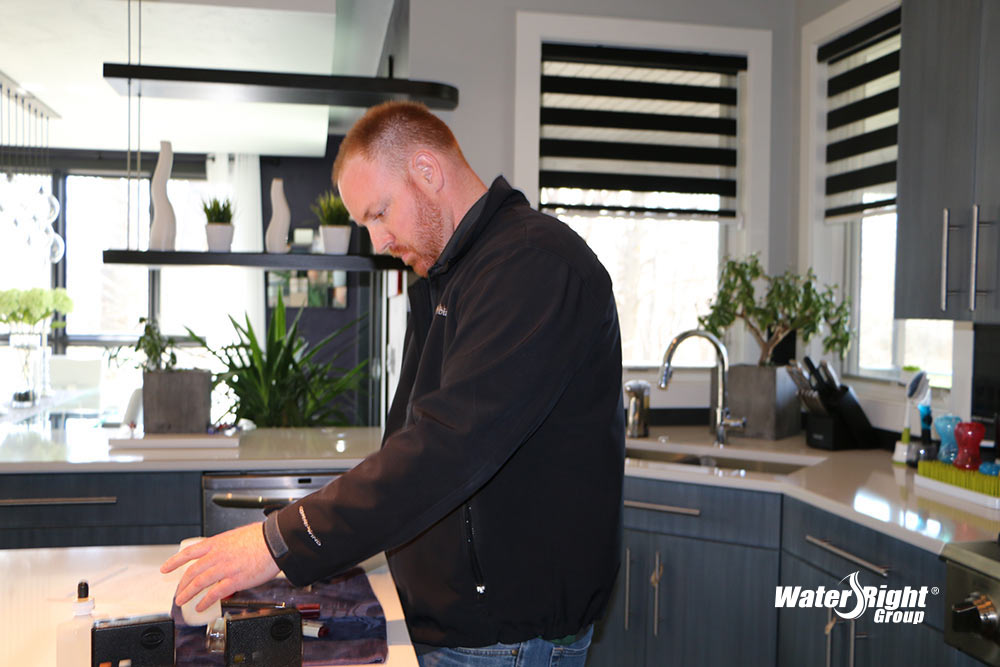
Next, it’s time to head to the kitchen where we’ll check out the quality of water inside the home and begin testing. We’ll set up the tools and be careful to wipe up any messes we make before we leave.
As our experts go through each test, they will tell you what they’re looking for, give you the results, and explain exactly what those results mean.
Since this home has municipal water instead of a private well and there is already a water softener installed, we won’t be conducting every single test. For this visit, we looked at water hardness, TDS (total dissolved solids) and pH (acidity of the water).
Other tests include:
- Iron test
- Manganese test
- Sulfur test
- Nitrate test
Testing for the presence of further problems in your water may need to take place in a special testing facility. If you are concerned about issues like arsenic, lead, and other contaminants, we can send samples to our state certified Clean Water Testing lab. You will receive a comprehensive analysis of your home’s water.
8. The Hardness Test
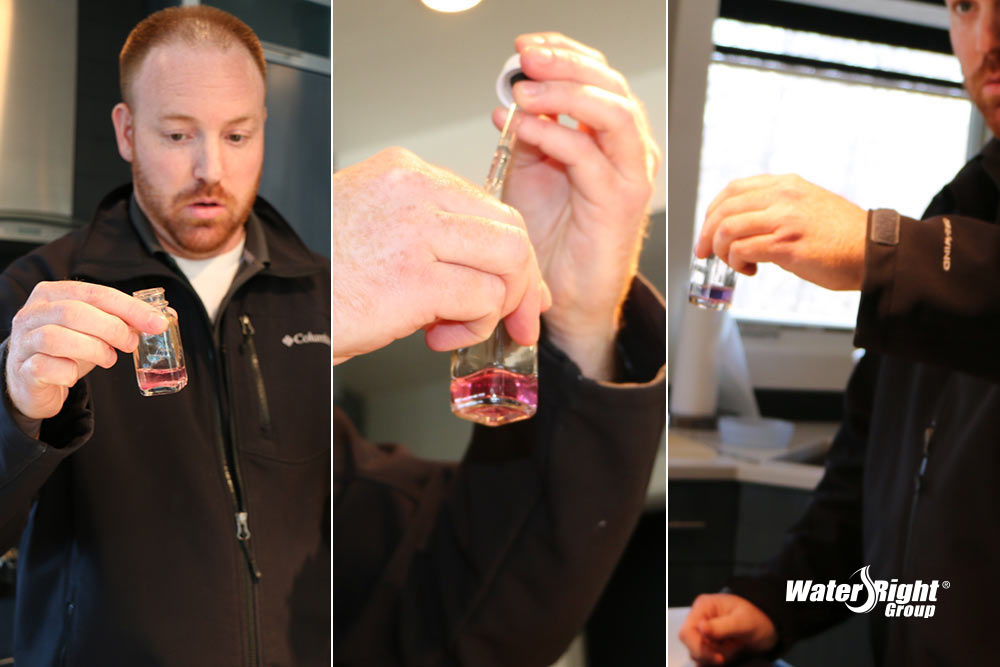
When we test the hardness of your water, we are specifically measuring the amount of dissolved minerals, such as calcium and magnesium.
Our experts use some special solutions that change color based on the hardness level. The first solution shows us whether the water is hard or soft. Red or pink means hard water, and blue indicates soft water.
Then we use an eye-dropper to add a second solution, which softens the water and turns it blue. Each drop of the solution needed to change the color is equal to one grain of hardness per gallon of water.
To put that into perspective, if it took five drops of the solution to turn the water blue, that’s equivalent to one aspirin tablet worth of hard minerals in every gallon of water you use.
This home’s raw water tested out at nine grains of hardness per gallon. That’s pretty hard. However, when we tested the treated water coming from the sink it was soft. That means the water softener is doing its job!
9. The TDS Test
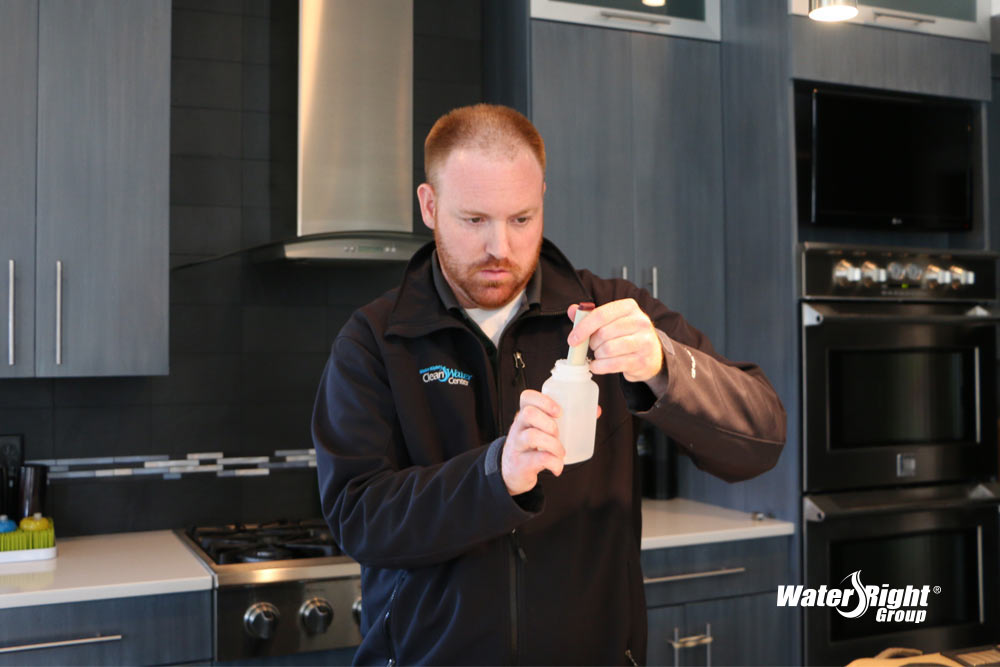
The second test we performed in this home’s kitchen is for TDS or total dissolved solids. Above, you see Randy using a TDS meter.
A high TDS reading can also be an indication of hard water. However, besides calcium and magnesium, there may be other total dissolved solids in water.
Total dissolved solids can be any organic or inorganic material dissolved in your water. The lower your TDS reading, the more pure your water is.
TDS levels can greatly impact the taste of your water. This water had a fairly high TDS reading, which could be why the homeowner has been using bottled water for drinking.
10. Testing the Water’s pH
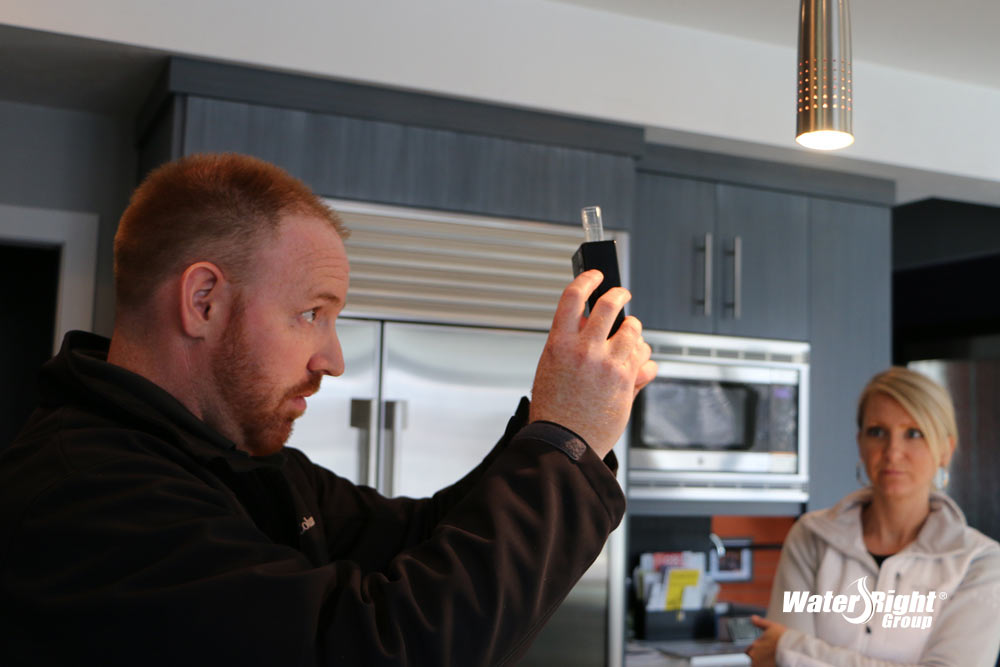
We’ll also test the pH level of your home’s water, which measures how acidic or alkaline it is. The pH scale runs from 1 to 14, with lower readings being more acidic and higher numbers being alkaline. A reading of 7 is considered neutral.
Having water that’s too acidic can cause your plumbing to corrode at an accelerated rate.
Our experts use a substance that changes the color of the water based on its pH. Then, we compare the color to a disc that correlates with the pH scale. This home’s water was close to 7, which is ideal.
11. Looking Under the Sink
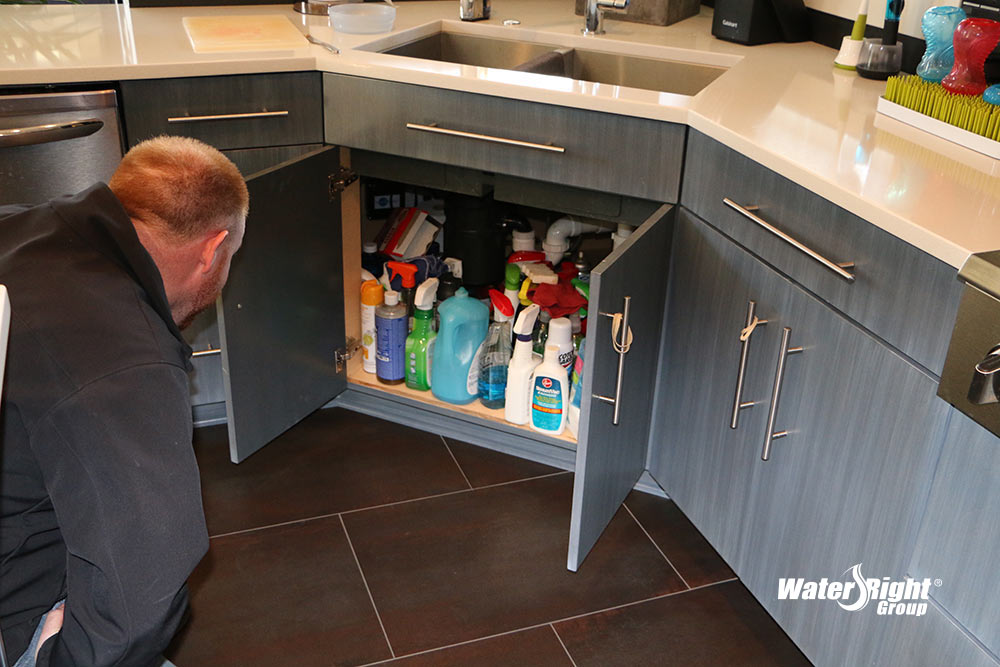
Even though this home’s water is being softened, and it is probably fine for effective cleaning, the homeowner isn’t satisfied with how it tastes.
Drinking water preferences are very personal. Not everyone likes the taste of soft water. Plus, the chlorine used in municipal water and the high TDS levels could have a negative impact on flavor as well. That’s why this homeowner is interested in a reverse osmosis (RO) drinking water system.
RO systems are like a final “polishing” step in water treatment. They filter out contaminants at a microscopic level.
RO systems are typically installed underneath kitchen sinks, providing homeowners with fresh pure water for drinking and cooking.
We’ll check under your sink to make sure there’s room for an RO, and we’ll look at other installation options, too. These systems can also be installed in basements if necessary.
12. Water Treatment Review and Recommendations
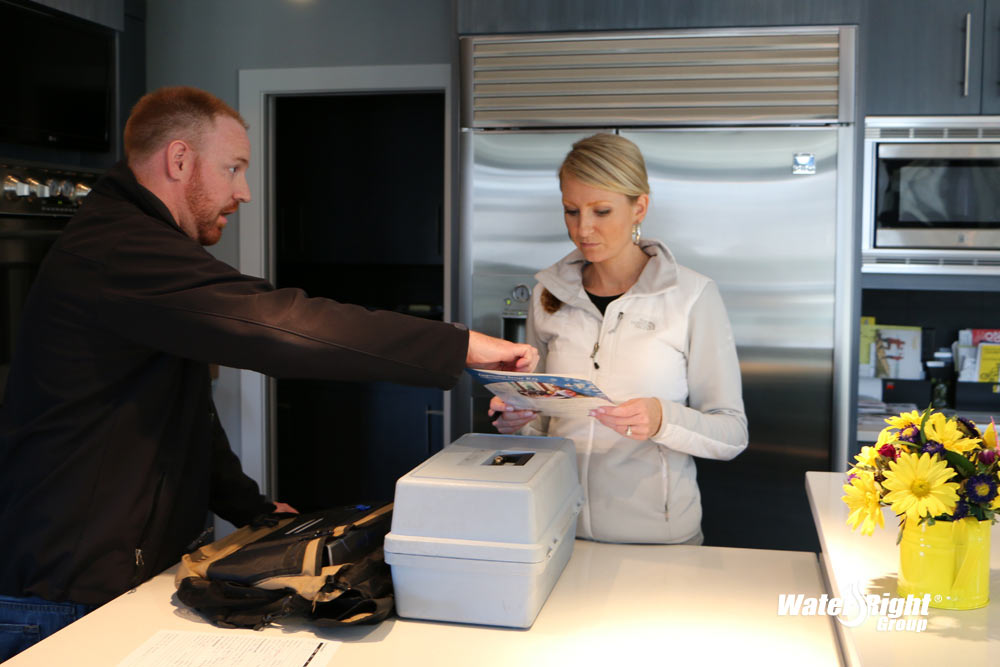
Finally, our water treatment experts will go over everything they discovered during your free in-home consultation. You’ll get a sheet with all the information we collected to keep for your personal records.
We’ll let you know if there’s any reason to be concerned, answer follow up questions you may have, and we’ll recommend solutions to any water quality issues we noticed.
If it makes sense, we’ll provide you with some pamphlets explaining our water-treatment and filtration options so you can discuss them with your family and make a decision.
Schedule Your Free In-Home Consultation Today!
Now that you know what to expect when our water treatment professionals visit your home for a free consultation, why not make an appointment and find out what’s in your home’s water? Typically, the entire visit takes about one hour.

